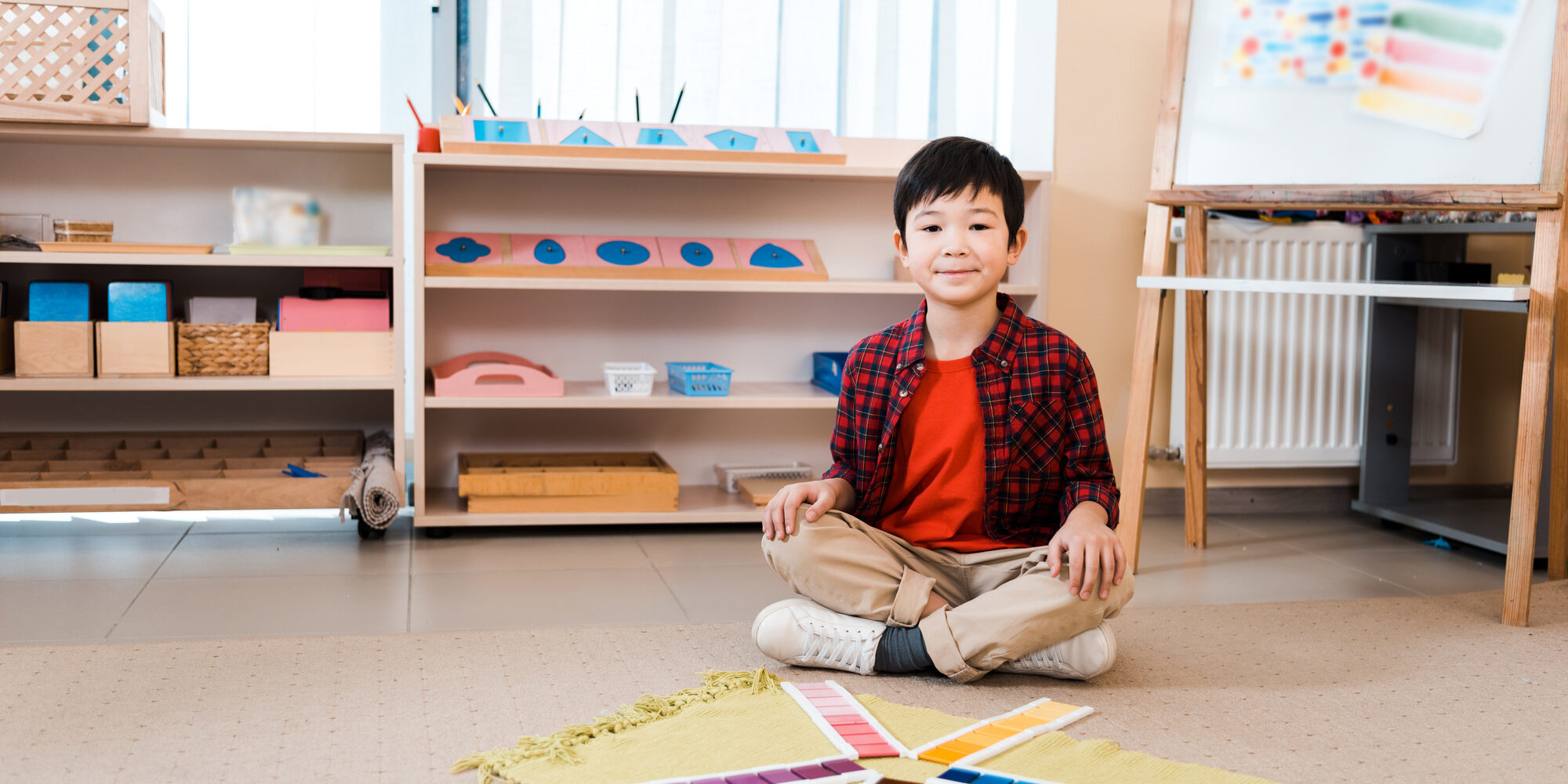With many childcare and education options popping up these days, it may be difficult for you, as a parent or guardian, to choose the ideal environment for your child. Many parents automatically select a traditional school, since it is familiar and, oftentimes, free. However, Montessori schools have become more and more popular, showing that something is truly special about them. But what are the differences between traditional and Montessori schools?
We’re going to find out today! Here are 7 differences between Montessori schools and traditional schools:
Prepared Environment
Teachers in a Montessori school setting take time to prepare the classroom to suit every student’s individual needs. The classrooms are simple, less cluttered, and have spaces where everyone can work on their own time and according to their own interests. In a traditional setting students often have to sit for long periods, listen to lectures, or work on worksheets even at a young age.
Respect for Natural Development
One of the greatest differences between a traditional school setting and a Montessori environment is the emphasis on respecting the child’s unique interests and natural development. In a traditional education, children are largely expected to follow the same path, advance at the same rate, and all be focused on the same page and topic each day. The teacher decides the curriculum, and the students pursue that.
In a Montessori setting, children are encouraged to develop at their own pace. Montessori philosophy recognizes that every child has varying interests and strengths. It is the child fulfilling their curiosity and interests in a hands-on way that drives natural learning and development.
Teachers are Guides
Rather than a teacher dictating everything that happens within a traditional classroom, Montessori teachers are taught to take a different route. Teachers are more collaborators or guides than instructors. Unlike a traditional school where perfect adherence to the teacher’s directions are rewarded, Montessori schools have teachers that give students freedom within limits, resulting in internal motivation.
The Montessori teacher is tasked with creating order in the environment and encouraging curiosity and independence. They may make suggestions, or show children how to use the learning materials, but most of the time they are observing how the children handle their tasks. In Montessori classrooms, the learning experience is centered on the child, rather than children looking to their teacher to dispense knowledge as found in traditional settings.
Independence
One of the things valued in a Montessori education is independence. Montessori philosophy believes every child is born with their own natural drive for learning, and their autonomy to follow their interests is respected. Conversely, in a traditional school, every child is held to the same standard, given the same lessons, and urged to work at the same pace. This can squash independence and creativity.
A Montessori classroom allows students to be self-sufficient and work at their own pace. They complete challenging tasks when they are ready, they are never coerced. This helps children build self-sufficiency and internal motivation.
Specialized, Sensory Materials
Traditional schools rely on lectures, seminars, workbooks, textbooks, and testing to teach. This rigidity can be boring to young minds. Montessori schools in Philadelphia and beyond take into consideration the natural world. There are specialized tools made from natural materials, such as wood, glass, and metal, that are designed to stimulate all the senses. Learning in Montessori schools is hands-on, so that students can engage more fully with the materials.
This is also why Philadelphia Montessori schools have their students spend time outside. Not only do Montessori students learn about nature and develop an appreciation for their environment, but they gain valuable skills, too.
Mistakes Can Be Made
As mentioned before, traditional settings will reward perfection but punish mistakes. This can cause students to feel embarrassed by their mistakes and may diminish their sense of adventure. Montessori philosophy says that mistakes are important to the learning process and should be seen as an opportunity to gain knowledge. Through self-correcting Montessori materials, children instead recognize the mistakes they make on their own, then they repeat the work to move toward mastery of the concept.
Age Groups, Not Grade Levels
Anyone brought up in a traditional public or private learning institution will remember the distinct levels, such as Grade 1-4 being elementary, Grade 5-8 being middle or intermediate school, and 9-12 being high school. Within these grades, everyone is around the same chronological age. In Montessori school, multi-age grouping is valued.
Instead, there are age ranges based on development, not grades or levels based solely on age. The age ranges in a Montessori school are usually 0-18 months, 18 months-3, 3-6, 6-9, 9-12, 12-15, and 15-18. Every age range has a distinct objective that students are guided towards. Yet, students may choose for themselves how they wish to learn. Multi-age grouping promotes leadership among the older children and gives younger students an opportunity to see the more advanced work being done, piquing their curiosity and interest.
Wrapping Up
As you can see, Montessori schools and traditional schools are quite different from one another. In a traditional setting, the teacher is the source of knowledge and the goal of learning is to pass a test. In Montessori schools, learning is child-centered, fostering deep understanding, self-esteem, and confidence.
Carefully weigh your options. If you have questions about Montessori or would like to see if Montessori is right for your child, why not give us a call at 215-821-1455? You can also fill out the contact form on our website.






